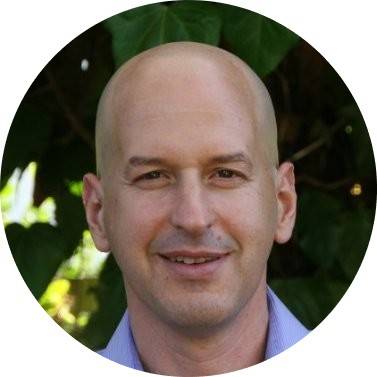This post was originally published by Yoav Boaz at Clarizen.
Legendary investor Warren Buffet has said that the core habit that separates successful people from very successful people, is that the latter say no to almost everything. Evidently, very successful agile marketing teams are borrowing from Mr. Buffet’s playbook, because compared to their counterparts, they’re supremely talented in the art of saying no.

What makes this trait even more impressive, is that conventional marketing teams — including very successful ones — have typically been wired to say yes to virtually all requests and changes. In fact, marketing’s assent is so utterly assumed in some organizations, that requests aren’t really requests. They’re basically orders, albeit with a cursory “would you mind?” or “can you help with this?” thrown in for esthetic purposes.
Yet when conventional project teams adopt an agile paradigm, one of the first things they must do is learn how to say no. This isn’t because they want to. It’s because agile is built on three integrated pillars:
1. Prioritizing work and focusing on what matters most vs. what matters least.
2. Ushering prioritized work through a standardized workflow (e.g. create, review 1, review 2, launch ready, to launch, complete).
3. Limiting the number of tasks in each phase of the workflow.
Agile teams that cannot say no undermine this integration — and open the door to chaos and failure. Nobody knows which tasks are a priority anymore, because everything is a priority. Workflows stop flowing as tasks crash into each other. And team members suffer an overwhelming, endless workload burden that leads to disengagement and burnout, along with quality issues, missed deadlines, unhappy customers, and sub-par results.
So, how can agile teams learn to say no, but without triggering endless conflict, or being unfairly perceived as chronically disagreeable and blatantly unhelpful? Frankly, it’s not easy. But it can (and must) be done. Here are some practical tips to keep in mind:
1. Educate Outsiders
Many conventional teams and customers outside of the agile world think that agile is basically conventional project management, but with some added flexibility and nimbleness. But when their requests are rejected instead of accepted, they get frustrated — and sometimes outraged. The best way to avoid this turbulence is for agile teams to educate outsiders on how agile works, and how it doesn’t. This awareness goes a long way to clarifying expectations, and turning potential adversaries into supportive allies.
2. Establish Visibility
Even with an awareness of how agile works and how it doesn’t, some external teams and customers may still balk at the idea of their “urgent request” being dumped into a backlog; especially if in the past this hasn’t been an issue. To address this key challenge, agile teams should use a simple and streamlined task management tool like Clarizen Go that lets executives and the PMO access an updated high-level overview of tasks in the workflow, so they can clearly see what is really going on — and do their part to keep workflows flowing.
3. Enforce Work-in-Progress Limits
Agile teams that use Kanban or Scrumban (Kanban + Scrum) methodology should focus on — or make that be obsessed about — enforcing realistic work-in-progress (WIP) limits for each phase of the workflow. For example, if teams determine the number of tasks that can simultaneously exist in the “review” phase is 10, then under no circumstances should an 11th task be added until a spot opens up. Admittedly, enforcing WIP limits can be much easier said than done. But agile teams that give ground on this front will have an extraordinarily difficult time reclaiming it back later on.
4. Break Down Requests to (Possibly) Turn No’s into Yes’s
Agile teams should reach into their diplomatic toolkit and see if there is a way to break down requests into something smaller, faster, and more viable. While there is no guarantee that a counter-offer like this will be accepted, it’s worth the effort.
5. Install a Scrum Master
Last but certainly not least, agile teams should install Scrum Master (or any other suitably authorized individual) who acts as a gatekeeper to vet requests before they’re added to the backlog. These essential people shield team members from burdens, noise and distractions, while they educate customers and manage expectations.
The Bottom Line
The shift from conventional project management to agile can be difficult; not just for agile teams themselves, but also — and sometimes especially — for external teams and customers that want to do things “they way that they’ve always been done”. Well, there’s no turning back the clock. There’s only forging ahead, and agile teams that master the art of saying NO put themselves on track for long-term success.
Source: https://www.clarizen.com/how-agile-teams-can-master-the-art-of-saying-no/
About the Author
Yoav Boaz

More resources:
RFPIO: Elevate the RFP Process in Your Asset Management Organization
Clarizen: The 10 Unexpected Joys of Virtual Happy Hour
IRONSCALES: The Scattered Perimeter: A New Norm
Emburse: Virtualizing Financial Operations to Adapt to Increased Work from Home Requirements
Jobvite: How to Thrive at Home – Whether You’re Working or Simply Living
